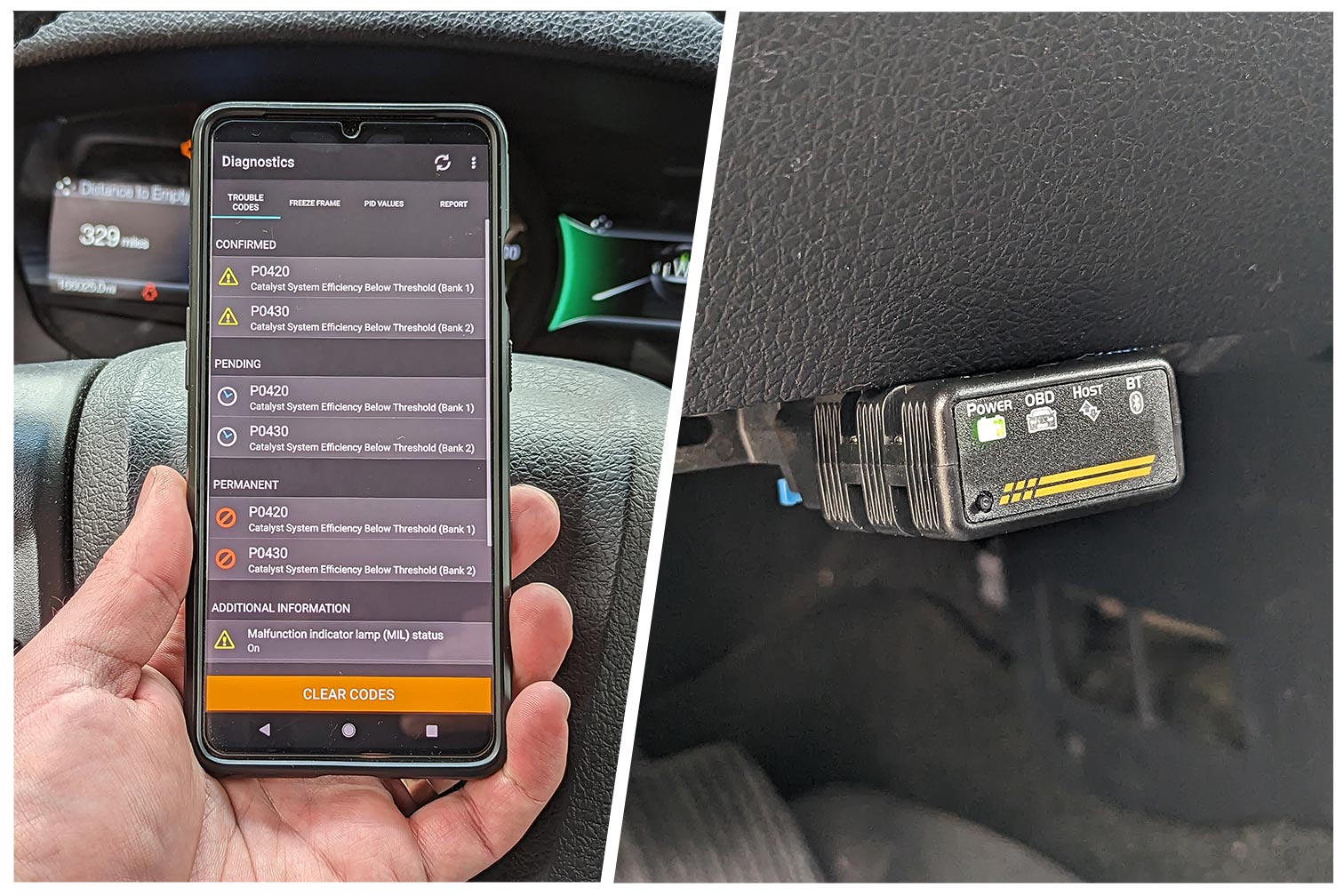Your Guide to On-Board Diagnostic (OBD) Scanners
These affordable tools let you look inside your vehicle's electronic systems.
 Austin Lott | Capital One
Austin Lott | Capital One
Whenever that annoying little "check engine" light illuminates on your car's dashboard, you have an on-board diagnostics, or OBD, system to thank for it.
All modern cars and trucks make use of OBD to keep track of the sensor data produced by the engine, transmission, emissions, and other vehicle systems. This information is managed and stored in the vehicle's electronic control unit, or ECU, and it's most commonly encountered when the "check engine" lights up to tell you something has gone wrong.
But the "check engine" warning is just one piece of information the OBD system has to offer. With the right OBD scanning tool, it's possible to unlock not just the diagnostic trouble codes that set a particular warning light ablaze, but also to monitor other important details about how your vehicle is operating.
What Is an OBD Scanner?
OBD-equipped vehicles all feature a data port that typically can be found under the dash. This port is used to access the system, and it's where you can plug in a hand-held device called an OBD scanner to interface with the OBD system.
These scanners typically come with a cable that allows them to be connected easily while you sit in the driver's seat. Some are powered by the OBD port itself, while others require a battery.
 Austin Lott
Austin Lott
Basic OBD Scanners - Code Reading and Resetting
The most common use for an OBD scanner is to read diagnostic trouble codes. Using buttons or the touchscreen on the device, you can select the code-reading option from the on-screen menu. The scanner sends a query to the vehicle's ECU and downloads any trouble codes that are stored in its memory. These codes are then displayed on its screen.
Some scanners will show just the code itself, requiring you to look up its meaning online, while others will also provide a definition. Almost every scanner, however, will allow you to reset the code and turn off the "check engine" or other light once you've corrected the problem associated with the code. Alternatively, if you think the code resulted from a temporary problem, resetting it will allow you to test that out over the next few miles of driving. Basic scan tools like these usually cost less than $100.
 Austin Lott
Austin Lott
Advanced OBD Scanning Capabilities
Some scanners have more advanced functionality. There are OBD scanners out there that can record sensor data while your vehicle is running so you can scan for any problems or unusual readings. There are others that include specialized functions that allow them to interact with vehicle systems such as the anti-lock brake controller and vehicle safety systems. These units typically start in the $200 to $300 range, which might be worth the investment if you're a more advanced DIY-er looking to avoid a trip to the shop.
Written by humans.
Edited by humans.
 Benjamin Hunting
Benjamin HuntingBenjamin Hunting is a writer and podcast host who contributes to a number of newspapers, automotive magazines, and online publications. More than a decade into his career, he enjoys keeping the shiny side up during track days and always has one too many classic vehicle projects partially disassembled in his garage at any given time. Remember, if it's not leaking, it's probably empty.
Related articles
View more related articles